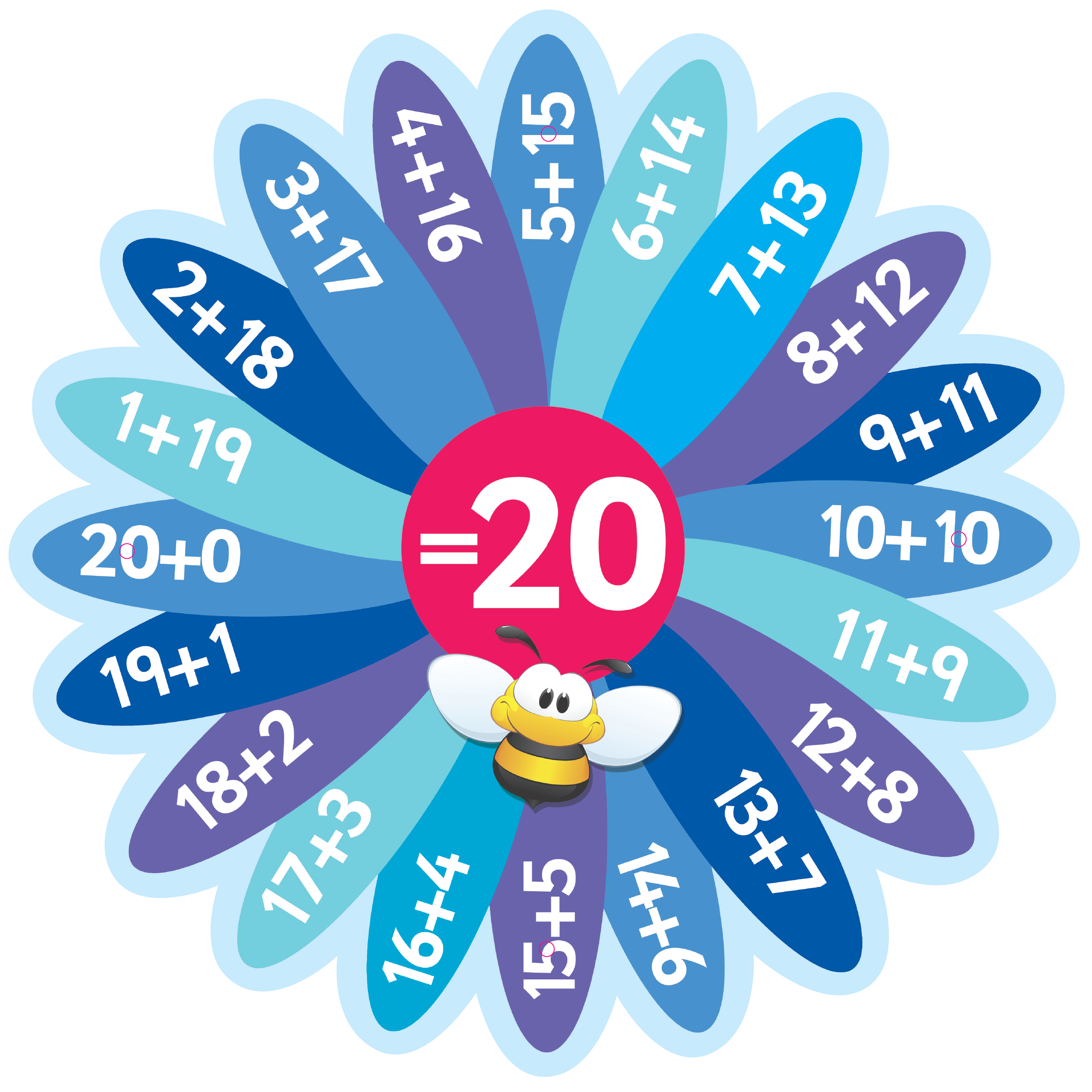
Today we will be looking at number bonds that make 20.
Starter: Give your child some time to write down all of the number bonds to 10. Encourage them to do this systematically, starting with 1 + 9= 10. If your child is struggling with this, give them the first number bond and let them use objects or fingers to find the missing number.
Main Activity
Next to the number bond 1 + 9 = 10 write down 11 + 9 = 20. Discuss the following:
- What is the same?
- What is different?
- What number have I made this time?
Do this again for the next couple of number bonds e.g. 2 + 8 = 10 so 12 + 8=20
Explain how we can use our number bonds to 10 to help us make number bonds to 20 by adding an extra 10 to one of the numbers. Remind your child that the additional 1 that has been added is actually worth a 10 because it is in the tens column. See if you child can come with the remaining number bonds to 20 using the same pattern.
NOTE: When it comes to 10 + 0, talk about how the extra 10 would go in the second number because 10 + 10 more = 20.
Consolidation
When your child is confident with this, they can have a go at playing the ‘Funky Mummy’ game to practise rapid recall of the number bonds to 20.
TIP: Keep encouraging your child to go back to their number bonds to 10. E.g. 1+9=10 so 1+ 19 =20.
